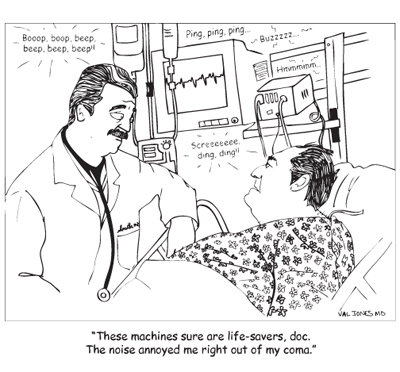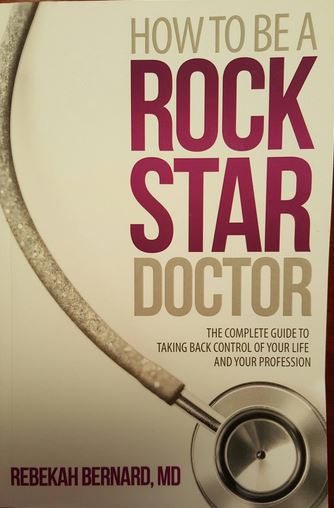October 1st, 2011 by Toni Brayer, M.D. in Opinion
1 Comment »

 We must not turn a blind eye to the shocking facts about land mines and the damage they cause to civilians and our own troops. The fact that modern warfare involves buried explosives that are completely untargeted should shock the conscience of the world. The number of severe wounds that affect our servicemen is on the rise and the Army’s Landstuhl Regional Medical Center in Germany is filled with casualties from Iraq and Afghanistan.
We must not turn a blind eye to the shocking facts about land mines and the damage they cause to civilians and our own troops. The fact that modern warfare involves buried explosives that are completely untargeted should shock the conscience of the world. The number of severe wounds that affect our servicemen is on the rise and the Army’s Landstuhl Regional Medical Center in Germany is filled with casualties from Iraq and Afghanistan.
There have been 79 cases of multiple amputations this year for our U.S. soldiers…more than any previous year and through July, 134 servicemen and women lost limbs. The year is only 1/2 over!
Doctors treating the troops said there is often damage to lungs, kidneys and livers from massive blood loss and shock. Infection is rampant and 90 soldiers lost Read more »
*This blog post was originally published at EverythingHealth*
September 21st, 2009 by Paul Auerbach, M.D. in Better Health Network, Health Tips
No Comments »

 This is the next post based upon a presentation given at the Wilderness Medical Society Annual Meeting held in Snowmass, Colorado from July 24-29, 2009. The presentation was about trauma and orthopedics. It was delivered by Douglass Weiss, MD of Teton Orthopaedics in Jackson Hole, Wyoming.
This is the next post based upon a presentation given at the Wilderness Medical Society Annual Meeting held in Snowmass, Colorado from July 24-29, 2009. The presentation was about trauma and orthopedics. It was delivered by Douglass Weiss, MD of Teton Orthopaedics in Jackson Hole, Wyoming.
Utilizing some fabulous images, including those of Lanny Johnson, Dr. Weiss made some important points. Many of these are familiar to seasoned medical practitioners, but they merit repeating. First, when approaching a victim, always attend to the “ABCs” first – airway, breathing, and circulation (including bleeding) – so that a life can be saved. Then, if possible, take into account other injuries, including those of bones – save the limb, save the joint, and restore function.
Here are two good pointers. First, your field evaluation of the victim may be the only complete one, so do your best to examine the entire victim, and also to document in writing what you discover. Examine and establish the airway, listen for breath sounds, observe chest movements, feel for pulses and observe skin color, etc. Within the constraints of the situation and environment, “expose” the victim in order to evaluate bony and other injuries. The, move on to the “secondary” survey, which will include examination of the neck, back, pelvis, arms and legs, looking for swelling, bruises, scrapes, cuts, bleeding and deformities. If you feel inappropriate motion (e.g., broken or dislocated bones or joints), be prepared to apply splints.
Always try to roll the patient (using a logroll technique if necessary) to examine the victim’s back.
For the benefit of doctors reading this post, remember that if a fracture is identified, suspect an injury to the joint above and below the fracture, and be sure to splint these for the comfort and protection of the victim.
The application of splints is an art form, so should be practiced prior to your expedition. Any limb that is obviously deformed or that demonstrates excess motion (where there should be none) should be immobilized immediately. If a helper(s) is available, use assistance. Be sure to pad all splints very well to avoid pressure injuries to the tissue underneath. Depending on the rescue, the splint may be in place longer than you anticipate.
If a broken bone (fracture) is “open” (the bone has poked through the skin), then apply a wet (preferably normal saline or disinfected water) dressing and apply a splint. If you have an all-purpose antibiotic (e.g., cephalexin, amoxicillin or ciprofloxacin) and the victim is capable of purposeful swallowing, administer a dose.
Fractures of the pelvis generally imply that a very significant force was applied, so they carry a high risk for associated life threatening injuries. The victim should be evacuated as soon as possible. It is commonly taught that a broken femur (the long bone of the thigh) can cause bleeding in excess of a liter into the limb. This can be dangerous, so these injuries should be promptly splinted, preferably with a pre-fashioned or improvised traction splint.
Compartment syndrome occurs when tissue pressures within inelastic soft tissue compartments of the limbs (commonly the forearm or lower leg exceed perfusion pressure, that is, the pressure necessary to allow blood to circulate freely through the tissues and provide energy and remove waste products. Symptoms include extreme pain, loss of pulses, pale skin color, weakness or paralysis of the muscle, and numbness and tingling. If the pain is severe and the skin feels tight, a compartment syndrome may be developing. If a compartment syndrome is felt to be impending or present, keep the limb elevated and seek immediate medical attention, because an operation may be required to open the compartment and release the pressure before the onset of permanent tissue damage.
Thanks to Dr. Weiss for his contribution to wilderness medicine education.
This post, Tips For Evaluating Injured People In The Outdoors, was originally published on
Healthine.com by Paul Auerbach, M.D..
 We must not turn a blind eye to the shocking facts about land mines and the damage they cause to civilians and our own troops. The fact that modern warfare involves buried explosives that are completely untargeted should shock the conscience of the world. The number of severe wounds that affect our servicemen is on the rise and the Army’s Landstuhl Regional Medical Center in Germany is filled with casualties from Iraq and Afghanistan.
We must not turn a blind eye to the shocking facts about land mines and the damage they cause to civilians and our own troops. The fact that modern warfare involves buried explosives that are completely untargeted should shock the conscience of the world. The number of severe wounds that affect our servicemen is on the rise and the Army’s Landstuhl Regional Medical Center in Germany is filled with casualties from Iraq and Afghanistan.












